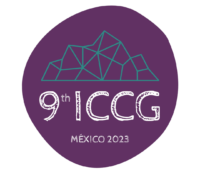In March 2020, cities around the world pivoted towards managing the Covid-19 pandemic, a global public health crisis playing out across longstanding patterns of uneven urban development. Almost immediately, the home and the neighbourhood were mobilized as key sites in public health strategies for managing the multiple exigencies provoked by the pandemic, although with notable differences across national, regional, and local scales. From “Stay in Your Neighbourhood” (quédate en tu barrio) in Buenos Aires to Ottawa’s “Neighbourhood Strategy” (estratégia barrial), public health strategies across the Americas engaged a range of neighbourhood-based tools and tactics for responding to the Covid-19 pandemic. In this research, we excavate the layered spatialities of pandemic management at the neighbourhood level in Ottawa. In the context of emergency, overwork, and the multifaceted crises of caregiving and health, neighbourhood strategies not only reinforced established forms of power and uneven development, but also revealed potential pathways for more liberatory and transformational urban futures.
Early in the pandemic in Ottawa, it became clear that older residents, racialized communities, immigrants, women, and lower income groups were most impacted by the Covid-19 crisis. This was related to higher case rates and poorer health outcomes shaped by the social determinants of health as well as the impact that public health orders and practices (designed to reduce the spread of the virus) were having on people with minimal economic resources, precarious employment, and limited childcare options and/or access to living, community, and public space. At the local level, existing socio-economic inequities quickly exposed the limitations of monolithic public health strategies for addressing socially differentiated publics.
In Ottawa, the neighbourhood became the lens through which the layered and entangled spatialities of “emergency welfarism” (Webb, 2022) and “slow emergencies” (Anderson et al, 2020) emerged into the spotlight. In response, local public health officials cobbled together what we refer to as the “neighbourhood strategy”, a collection of improvised, even experimental, efforts to limit the spread of Covid-19 and mitigate the impact of the pandemic on immigrant, racialized, and lower income residents. Targeting priority neighbourhoods for outreach, testing, vaccination, and public health information provided a mechanism to reach some of the most affected residents with much needed supports. However, these strategies used pre-existing spatial and data collection tools, some of which had roots in state led efforts to police and regulate poor communities. Neighbourhoods were identified and targeted as bounded entities, raising concerns about stigma, surveillance, and the limitations of focusing on residential spaces. The hyper-focus on the residential unit as a site of measuring case rates significantly overlooked precarious conditions of overwork, exposure, and depletion in front line labour, a situation which continues to this day.
As a case study, pandemic management in Ottawa uncovers the structural ties between the layered spatialities of crisis and how a health crisis is also composed of everyday crises of housing, labour conditions (waged and unwaged), food security, elder and childcare, carceral institutions, education, etc. Attentiveness to these layered spatialities not only exposes deeply embedded forms of inequality, but also highlights possibilities for more just geographies and imaginaries of recovery rooted in various forms of collective and community care.
Our research draws from over 2 years of fieldwork and 44 in-depth group and individual interviews conducted with a variety of actors involved in both the planning and implementation of Ottawa’s neighbourhood strategy, including staff at community health and resource centres, settlement and housing organizations, Ottawa Public Health, faith and community leaders and local politicians. Our field research also incorporates participant observation from various committee and board meetings at the city, public briefings, and community meetings, as well as a review of media coverage and existing research.
References
Anderson, B., Grove, K., Rickards, L. and Kearns, M. 2020. Slow Emergencies: Temporality and the Racialized Biopolitics of Emergency Governance. Progress in Human Geography 44(4): 621- 639.
Webb, Chris. 2022. Pandemic Lessons for Rebuilding Canada’s Welfare State. Socialist Project: The Bullet (November 14).
